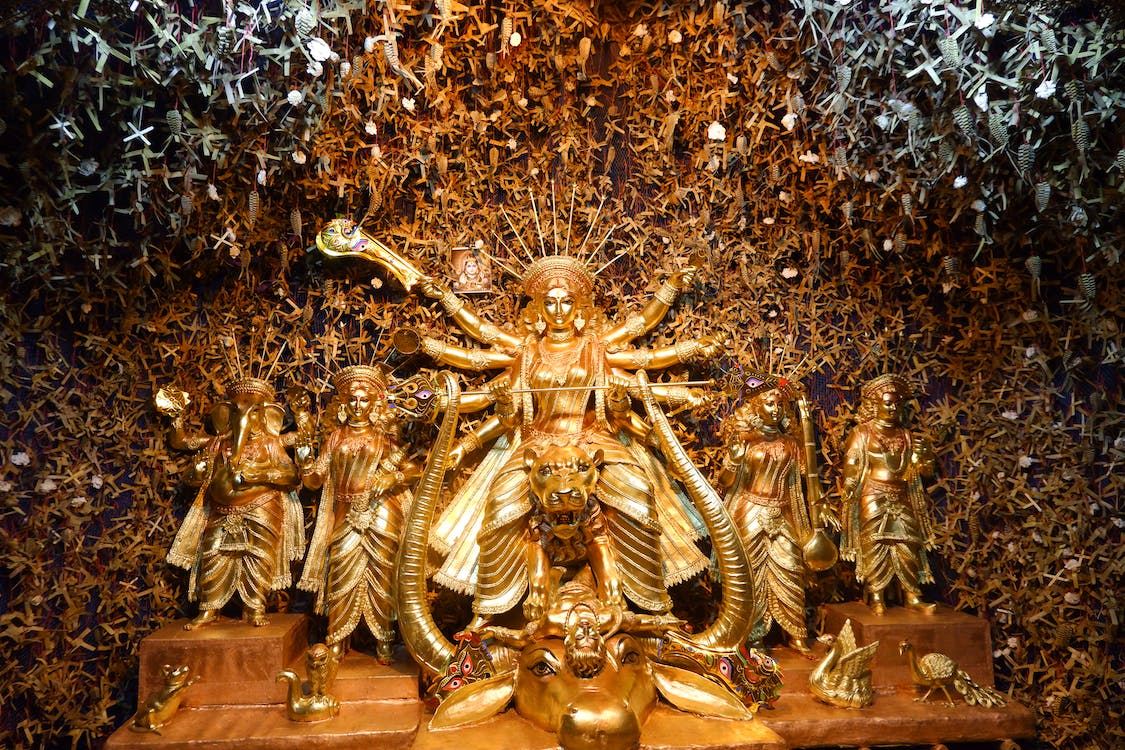
Informative
Nine Offerings for the Nine Forms of Maa Durga
In the radiant glow of Navratri, hearts are filled with devotion as seekers across the world prepare to honor the Divine Goddess, Maa Durga. These nine sacred days are more than just a festivity. They are a time of deep appreciation, where devotees celebrate the triumph of good over evil. With each dawn, they dedicate their prayers to one of Maa Durga’s nine powerful forms, seeking Her blessings and protection.
This blog dives into the heart of Navratri traditions, unveiling the secrets of devotion and culinary delights. People offer special food they have prepared called “Prasad” to the goddess and Her forms to show their love.
Let’s explore the spiritual significance of these different offerings and understand what positive effects they bring to your life. We’re on an exciting adventure to learn how people pray and what tasty foods they offer to make Maa Durga happy.
What are the nine Incarnations and Nine Bhogas (offerings) of Maa Durga?
Day 1: Maa Shailputri
As we begin Navratri, we celebrate Maa Shailputri, the embodiment of strength and purity. To honor Her, we offer pure Desi Ghee (clarified butter) at Her feet. This ghee symbolizes purity and is believed to bless us with a life devoid of ailments and illnesses.
Day 2: Maa Brahmacharini
On the second day, we revere Maa Brahmacharini, the symbol of divine virtue and penance. We offer sugar as a Bhog to Goddess Brahmacharini, seeking Her blessings. This offering represents the sweetness of spiritual growth and the fruit of self-control.
Day 3: Maa Chandraghanta
Day three brings us the fierce avatar of Maa Durga, Maa Chandraghanta. Devotees offer Her Kheer (Sweet Rice Pudding) as prasad, signifying the fulfillment of spiritual cravings and the sweetness of devotion.
Day 4: Maa Kushmanda
On the fourth day, we pay homage to Maa Kushmanda, the creative energy of the universe. As a token of our reverence, we offer Malpua (Sweet Fried Pancake). This act, accompanied by the recitation of sacred hymns, is a prayer to invite prosperity, happiness, and abundance in our lives.
Day 5: Maa Skandmata
On the sacred journey of Navratri, the fifth day brings us into the presence of Maa Skandmata, the Divine Mother. She is the embodiment of purity and maternal love. On this auspicious day, we offer a Bhog of ripe bananas to the Divine Mother. The act of offering these bananas symbolizes our desire for good health and well-being, as it is believed that Her blessings channeled through this Bhog nurture the devotees and their families with vitality and strength.
Day 6: Maa Katyayani
As we continue our devotion on the sixth day, we invoke the grace of Goddess Katyayani. She is the nurturing force that removes bitterness from our lives and fills them with sweetness. To receive Her Divine blessings, we offer honey as Prasad. Honey, with its natural sweetness, is an offering that mirrors our sincere aspiration for a life filled with joy and devoid of negativity.
Day 7: Maa Kaalratri
On the seventh day, we pay homage to Maa Kaalratri, the fierce form of the Divine Mother who protects us from malevolent forces. We offer Jaggery and sweets made with jaggery as Bhog, along with Dakshina (donations) to Brahmins. This offering serves as a shield against evil spirits and negative energies. By partaking in this sacred offering, we seek Her divine protection and guidance.
Day 8: Maa Mahagauri
The eighth day of Navratri is dedicated to Goddess Mahagauri, another magnificent manifestation of Maa Durga. Her divine grace is invoked through the offering of coconuts as Prasad. It is a widely held belief that donating coconuts to priests on this day ushers in prosperity and happiness into our lives. Furthermore, the benevolence of Mahagauri is said to bless childless couples with the precious gift of offspring.
Day 9: Maa Siddhidatri
As we reach the culmination of this spiritual journey, we venerate Maa Siddhidatri on the ninth day of Navratri. Devotees fast in Her honor and offer a Bhog of Til or sesame seeds. This sacred offering is a symbol of seeking protection from Maa Siddhidatri for the entire family, guarding them against unfortunate mishaps and ensuring their well-being.
In conclusion, the practice of offering Bhog to the Divine Mothers during Navratri transcends mere ritual. It is a powerful tool for spiritual growth and personal development. Through these offerings, we learn to balance our physical well-being, cultivate a sweet and positive disposition, protect ourselves from negativity, share our prosperity, and ensure the well-being of our families.
May the blessings of the Divine Mothers guide us on our spiritual journey, filling our lives with love, health, and prosperity. Happy Navratri, and Jai Mata Di.
Click here to download Navratri Sadhana E-Book. Ignite your inner spiritual fire this Navratri! Don’t miss the chance to be part of the Devi Sadhana with His Holiness Shri Chamunda SwamiJi. DM your Email for event details.
Please subscribe to our mailing list to stay connected and receive spiritual information. In case of any queries, please write to us at info@chamundaswamiji.com. You can check out our YouTube channel Chamunda Swamiji where you can learn Tantra, Mantra, Yantra, and Meditation from His Holiness Shri Chamunda Swamiji. If you seek to learn Shakti Kriya, please register with us, and we will get back to you.
Post a Comment
-
Subscribe to Our Blog
-
Categories
-
Popular Articles
- Dead moth in the house. What universe is trying to tell you?
- Spiritual Meaning of Moth
- Vivah Bandhan Curse – What Is It and How to Spiritually Heal It.
- The Dasa Mahavidyas
- What are Beej Mantras?
- Tripura Sundari | The Dasa Mahavidya
- Maa Bhuvaneshwari | The Dasa Mahavidyas
- The Five Shades of Tantra
- Ramakrishna Paramhansa – The Man who almost became a Woman
- Maa Chinnamasta | The Dasa Mahavidyas



